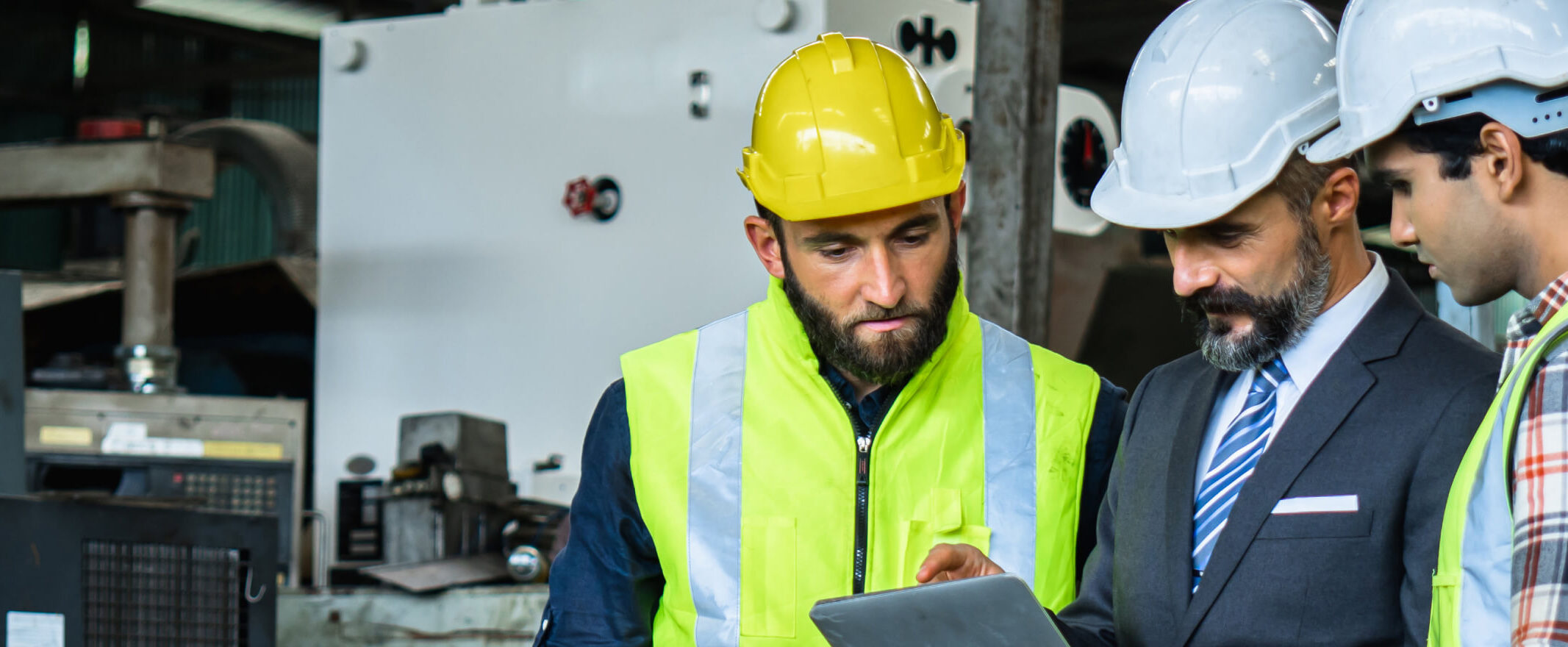Brazil Iron has completed a Feasibility Study based upon the following project configuration.

of green direct reduction grade pellet feed
of green direct reduction pellets
of hot briquetted iron (briquetted direct reduced iron)

of green direct reduction grade pellet feed
of green direct reduction pellets
of hot briquetted iron (briquetted direct reduced iron)
The key to decarbonising steel production is the shift from coal-based blast furnaces to electric arc furnaces (EAFs), powered by renewable electricity. With the right feedstock, this approach can achieve zero carbon emissions. EAF’s can only be fed with scrap steel and direct reduced iron (DRI). There are 337mtpa of EAF capacity under development. Deficits in supply of both scrap steel and DRI are looming. By 2031, McKinsey Co. estimate the deficit in DRI to be 109mtpa. In order to deliver the required steel in a sustainable way, without emitting co2 into the atmosphere, substantially increased in sustainably production of DRI is required.

Published 17/09/2025 • 11:27
KEY POINTS
Emerson Souza, vice president of Brazil Iron, highlighted this Wednesday (17), at ABX25, the need to integrate the entire production chain to reduce greenhouse gas emissions.
Sustainability in the automotive industry goes beyond the electrification of vehicles.
Sustainability in the automotive industry goes beyond the electrification of vehicles. Emerson Souza, vice president of Brazil Iron, highlighted this Wednesday (17), at ABX25, the need to integrate the entire production chain to reduce greenhouse gas emissions.
"The automobile industry was one of the first in the world to move in this process, already through the electrification of cars. But there is no point in having electric cars if production continues to be made with a steel that, in its generation, eliminates a large amount of greenhouse gases in the atmosphere. Integration is fundamental," said Souza, in an interview with Times Brasil – Exclusive Licensee CNBC.
"Green iron is an input produced from traditional iron ore, but with a fully decarbonized process. It is the only input that makes it possible to transform it into green steel, that is, a raw material for cars and for the basic industry without greenhouse gas emissions," said Souza.
See the coverage of ABX25:
According to the executive, only 3% of the world's iron ore has this capacity, and that Brazil, especially Bahia, has unique conditions for the development of this material. "Brazil has a window of opportunity to enter the forefront of the decarbonization of the basic industry as a whole," he said.
He also commented on the international demand: "Asia and Europe are already seeing the need to produce green steel. The race for the material is great, and the automotive industry is one of the first to seek this product to build cars that are green not only in driving, but also in manufacturing."
The Brazilian project in Bahia includes three stages of processing until reaching the green iron, technically known as HBI. "In addition to generating a more planet-friendly product, the process creates jobs, collects taxes and increases the added value of exported production," he concluded.
Read more
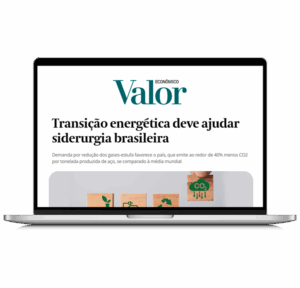
Valor Econômico published a feature on the decarbonization of the steel industry, and we were one of the main highlights. The article emphasized the value of our investment in Bahia, mentioned the start of operations in 2030, and reported that our production is already sold to Asia and Europe. It also covered key topics from our talking points, such as CBAM, Japan’s incentives for green steel car manufacturing, and the McKinsey study.
Read the full article at ttps://valor.globo.com/publicacoes/especiais/energia-tecnologia/noticia/2025/09/30/transicao-energetica-deve-ajudar-siderurgia-brasileira.ghtml (subscriber access).
Read more
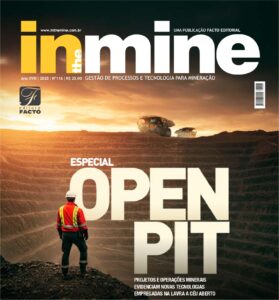
By ITM Editorial
Project foresees low-carbon production, the creation of up to 53,000 jobs, and Brazil’s global prominence in the energy transition
The Ferro Verde project, developed by Brazil Iron, is underway in Chapada Diamantina (BA) and promises to transform the mining and steelmaking landscape in Brazil and worldwide. With an estimated investment of US$ 5.7 billion, the venture is moving toward the production of Hot Briquetted Iron (HBI) with extremely low carbon emissions, known as green iron. The proposal is to produce raw material suitable for the global transition from traditional and highly polluting coal-based blast furnaces to Electric Arc Furnaces (EAFs), which can operate with low- or zero-emission energy.
The company has already invested more than R$ 1.7 billion in Bahia and is finalizing the Bankable Feasibility Study (BFS) of the project, with construction expected to begin at the end of 2026. Ferro Verde includes three open-pit mines—Conceição, Jussiape, and Mocó—and is centered in the municipalities of Piatã, Abaíra, and Jussiape in Bahia. It stands out with certified mineral resources of 1.7 Bt, along with innovative practices in logistics, sustainability, and environmental recovery.
According to Rob Davies, CTO of Brazil Iron, the initiative has strong support from international investors, financial institutions, and export credit agencies (ECAs), with the goal of positioning Brazil as a global leader in green iron production—a key resource for decarbonizing the steel value chain.
With 433 km² of mining rights in Bahia, Brazil Iron holds one of the largest iron ore concessions granted to a foreign company in the country.
High-quality hematite formations are present in sequences ranging from the Archean to the Paleoproterozoic periods of Chapada Diamantina, extending across a belt of about 60 km, ensuring both scale and deposit continuity.
In addition to over 100 km of completed exploration drilling in the region, the project has already conducted metallurgical studies in three countries—Brazil, Germany, and the United Kingdom (UK). The results of these analyses, according to Davies, consistently demonstrate the project’s ability to produce a concentrate suitable for supporting subsequent pelletizing and HBI production operations through Direct Reduction (DR) technology. The integrated operation includes the mines, a 120 km railway branch line, a pelletizing plant, and an HBI facility at Porto Sul, on Bahia’s coast.
In June 2025, the company announced a 24% increase in mineral resources, certified under the Canadian NI 43-101 standard. Total resources now stand at 1.7 Bt, 24.08% above the previously verified 1.37 Bt.
The BFS is scheduled for completion in Q1 2026. The Mining Concession has already been approved by Brazil’s National Mining Agency (ANM), and the project is currently in the process of obtaining an Installation License (LI) from Inema (Bahia’s Institute for the Environment and Water Resources). Construction is set to begin at the end of 2026.
The US$ 5.7 billion financing will come from a combination of equity, debt, and ECA support, backed by institutions with assets exceeding US$ 10 trillion. Thus, says Davies, the company has no current plans for an IPO.
At present, the project employs about 240 people, including 133 direct jobs.
“At the peak of construction, the development of the mine, the logistics system, and the industrial units should create approximately 53,000 direct and indirect jobs,” estimates the CTO.
Ore processing will follow these steps:
“This process route will yield pellet feed with 67.5% Fe and extremely low contaminant levels, making it ideal for Direct Reduced Iron (DRI) production,” assures Davies.
The mining operation will include a tailings filtration system, eliminating the need for dams. Material will be stored for later use in backfilling mined-out pits, mixed with waste rock. The planned 8 Mtpa of concentrate will be transported by rail to port facilities, where it will be pelletized and processed to generate HBI. According to Davies, the DRI will contain about 94% iron content.
A current logistical bottleneck is the completion of Section 1 of FIOL (West-East Integration Railway), which connects to Porto Sul. Construction on this section—concessioned to Bamin (Bahia Mineração), another iron ore producer in the state—has been halted, and work on Porto Sul itself is delayed.
Davies admits that FIOL Section 1 and Porto Sul are central to the Ferro Verde project’s planning, so alternative strategies are being evaluated with state and federal governments to establish a viable logistics framework.
“The state of Bahia offers several port options that could enable a world-class integrated mining and HBI production system, aligned with our commitment to sustainability, efficiency, and long-term value creation,” says the executive.
Internal transport logistics appear well resolved. At the mine, an IPCC (In-Pit Crushing and Conveying) system will be implemented, crushing ore at the mining face and replacing diesel truck haulage with electric conveyor belts. Developed in partnership with German company RWE, this technology reduces direct (Scope 1) CO²-equivalent emissions and dust, while operating with clean energy.
For auxiliary equipment, Brazil Iron also plans to adopt an electric fleet, powered by batteries or hybrid diesel-electric equipment. The beneficiation process has been designed to operate entirely with renewable energy sources, leveraging Bahia’s potential in this area, supported by wind and solar projects already operating or under development near the mine and along the logistics corridor to the port.
In the future, Davies explains, the project will incorporate green hydrogen as a reducing agent, enabling zero-carbon iron production and supporting the complete decarbonization of the steel value chain.
According to Rafael Genú, Brazil Iron’s Environmental, Land, and Community Relations Manager, the Ferro Verde project’s technologies and environmental and social programs reflect the company’s clear commitment to responsible regional development.
On the environmental side, he highlights dry stacking of tailings, dust emission control through mist sprayers, covered conveyor belts, polymers on access roads, and water management systems, including effluent and sewage treatment stations and water drainage and reuse processes for both mining and industrial operations.
“These practices not only help protect regional water resources but also ensure more rational use of water—a resource that is increasingly valuable, especially in Chapada Diamantina,” says the manager.
On the social front, the project foresees up to 53,000 direct and indirect jobs, including 5,000 for local residents during construction and operations. Detailed studies were conducted to avoid impacts on cultural heritage, schools, healthcare units, and, most importantly, to preserve caves classified as having maximum speleological relevance in the region.
Engineering decisions were guided by socio-environmental criteria, aimed at avoiding forced resettlements and protecting high ecological value areas, such as the Priority Conservation Areas of Chapada Diamantina.
According to Genú, the project aligns with a series of public policies and strategic government programs, including the National Mining Plan 2030, the “Light for All” program, and cultural support mechanisms such as the Paulo Gustavo and Aldir Blanc Laws.
“This institutional articulation seeks to maximize benefits for the local population and ensure that economic growth goes hand in hand with cultural appreciation, social inclusion, and environmental protection, in line with best ESG (Environmental, Social, and Governance) practices and the expectations of a market increasingly demanding in terms of sustainability,” concludes the manager.
Read more
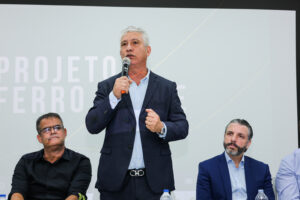
With an investment of US$ 5.7 billion, the Green Iron Project expects to generate more than 55 thousand jobs in Bahia, with a focus on green steel and decarbonization of the steel industry.
The Bahia Mineral Research Company (CBPM) met and provided consultancy to the British company Brazil Iron for the development of the Green Iron Project, an investment of US$ 5.7 billion that provides for the processing of iron ore, the construction of a 120 km railway branch and the installation of steel plants, expected to generate more than 55 thousand direct and indirect jobs. In addition, the company has already invested R$ 1.7 billion in Bahia, an amount that is not included in the estimated capital for the project.
The meeting, held in the municipality of Piatã, brought together mayors and councilors of the municipalities involved to learn about the details of the strategic enterprise, which combines technological innovation, sustainability and socioeconomic development. According to the creators, in addition to the economic impact, the project positions Bahia as a national reference in the production of green steel, strengthens the sector's production chain and contributes decisively to the decarbonization of the Brazilian steel industry.
Considered an essential input for the transformation of the global steel industry, Green Iron consists of the production of Hot Briquetted Iron (HBI). The technology makes it possible to replace polluting coal-fired furnaces with electric models, capable of reducing carbon dioxide emissions by up to 99%. The use of high-quality iron ore and 100% renewable energy places the project at the frontier of the sector's energy transition.
"The Green Iron Project places our state at the forefront of the energy transition in the steel industry. It is not just an economic investment, but a strategic step to generate jobs, boost technology and transform a mineral resource into a cutting-edge, sustainable and efficient industrial solution", said the president of CBPM, Henrique Carballal.
For Brazil Iron's Vice President of Institutional Relations, the detailed presentation of the Green Iron Project to local managers reinforces the company's commitment to transparent relations. "Our commitment to the development of the region is to create a legacy that goes beyond investment. We believe that a successful project is built with dialogue and partnership. In the next steps, we will do the same with community leaders and the population, ensuring that everyone's participation is the basis of our project," said Souza.
The mayor of Piatã considered the initiative a "very important step to associate the economic potential of the mineral sector with the responsibility of fostering social and environmental development". "With this action, CBPM shows that it is possible to transform natural resources into a symbol of prosperity, always respecting the environment and the community, building a more sustainable future for Piatã", added Marcos Paulo.
Publication source: MINÉRIO DE FERRO | Projeto Ferro Verde vai gerar mais de 55 mil empregos na Bahia | Brasil Mineral
Read more
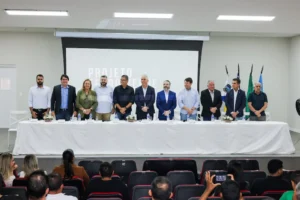
With a total investment of US$ 5.7 billion in the state of Bahia, the Green Iron Project promises to be a milestone for the transformation of the steel industry. The project foresees the processing of iron ore, the construction of a 120 km railway branch and the installation of steel plants, with an expected generation of more than 55 thousand direct and indirect jobs.
In a meeting promoted by the Bahia Mineral Research Company (CBPM), mayors and councilors of the municipalities involved in the Green Iron Project were presented with the details of the project developed by the English company Brazil Iron, which combines technological innovation, sustainability and socioeconomic development.
The company has already invested R$ 1.7 billion in Bahia, an amount that is not included in the estimated capital for the project. In addition to the economic impact, the project positions the state as a national reference in the production of green steel and strengthens the sector's production chain and contributes decisively to the decarbonization of the Brazilian steel industry.
For Brazil Iron's Vice President of Institutional Relations, Emerson Souza, the detailed presentation of the Green Iron Project to local managers reinforces the company's commitment to transparent relations.
"We believe that a successful project is built with dialogue and partnership. In the next steps, we will do the same with community leaders and the population, ensuring that everyone's participation is the basis of our project," he said.
Considered an essential input for the transformation of the global steel industry, Green Iron consists of the production of Hot Briquetted Iron (HBI). The technology makes it possible to replace coal-fired furnaces, which are highly polluting, with electric furnaces, capable of reducing carbon dioxide emissions by up to 99%. The use of high-quality iron ore and 100% renewable energy places the project at the frontier of the sector's energy transition.
The president of CBPM, Henrique Carballal, highlighted the impact of the project for Bahia. "The Green Iron Project places our state at the forefront of the energy transition in the steel industry. It is not just an economic investment, but a strategic step to generate jobs, boost technology and transform a mineral resource into a cutting-edge, sustainable and efficient industrial solution," he said.
The event, held in the municipality of Piatã, was also attended by the mayor of the municipality, Marcos Paulo; the mayor of Abaíra, Wellington Barbosa; and the mayor of Jussiape, José Luz. Also present were the deputy mayors and councilors of the municipalities; the special advisor to the Civil House, Marcelo Emerenciano; the former federal deputy and state president of Avante, Ronaldo Carletto; and state deputies Júnior Muniz, Niltinho, Fabíola Mansur and Eduardo Salles.
Publication source: CBPM e Brazil Iron apresentam Projeto Ferro Verde para gestores
Read more

Foto: Divulgação/Bahia Export
Called HBI, the product is already arousing the interest of large industries for more sustainable operations
Bahia stands out as one of the main mineral producers in Brazil and the world and, within a short and medium-term scenario, the state can be a major supplier of HBI, an acronym for the so-called green iron, which is iron ore processed without the use of fossil fuels, such as coal and natural gas. Even though it is little known in the international market, it can bring large investments to Brazil.
In Bahia, Brazil Iron stands out within the transition scenario to low-emission steel production. The company's Vice President of Institutional Relations, Emerson Souza, presented the current scenario of the green iron during Bahia Export, the State Forum of Logistics, Infrastructure and Transport.
According to the executive, the production of the material follows the line of decarbonization of the steel industry. "Basically, 8% to 10% of greenhouse gas emissions come from the steel industry. So, it is very important for us to change our energy base to a low-carbon base. For this transition, you have to change the furnace, coal-fired, to an electric arc furnace. But the furnace only works, it only has the ability to transform iron ore into steel with a specific type of ore, which is exactly green iron," he explained.
Souza said that of 100% of the iron ore distributed around the world, only 3% of this capacity has characteristics for the production of HBI. He highlighted the state's potential for the development of the product.
The Brazil Iron executive pointed out that the demand in the international market, even though it is a material considered to be of low knowledge, is very high in a projection for the next ten years.
"The Japanese government already provides a subsidy of $380 per ton for the transition from impure steel to green steel. In Europe, from 2026, all steel production that is not 100% decarbonized will be tariffed. And then I bring the conclusion, that our projection is to start production from 2030. From the moment we connect to our green iron industry, the first ten years of production are already sold. The market has already bought. It's not that I'm going to go out to sell, the market has already bought ten years of production, which already guarantees a revenue of 30 billion dollars from this investment," he concluded.
Participating in the panel were Henrique Capballal, president of the Bahia Mineral Research Company (CBPM); Marcelo Silvestre, president of Galvani Mineração; and Tony Lima, COO of Atlantic Nickel. The moderation was by Georgina Maynart, journalist from Rede Bahia (TV Globo).
Publication source: Ferro verde conecta Bahia à demanda internacional por aço descarbonizado | BE News
Read more
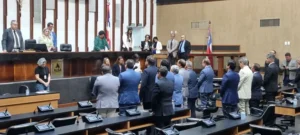
Deputies in an ordinary session of ALBA - Photo: Lula Bonfim | AG. THE AFTERNOON
Check out Levi Vasconcelos' column this Wednesday, 20
Deputies who are part of the Assembly's Infrastructure Commission went yesterday to Piatã, in Chapada, for a public hearing with the participation of the leaders of Brazil Iron, which will explore there the so-called 'green iron', with 70% purity, one of the best percentages on the planet.
Deputy Eduardo Salles (PP), president of the Commission, says he is excited.
– It is something positively surprising. Brazil Iron will invest R$ 5.5 billion. From the outset, it will generate 24 thousand jobs and 30 thousand by 2030, when it will be fully installed.
The mine area covers the municipalities of Piatã, Abaíra and Jussiape. In addition to Eduardo, there were also deputies Niltinho (PP), Júnior Muniz (PT) and Fabíola Mansur (PSB).
CLEANING – Eduardo says that the Green Iron Project, as it is called, provides for the transport of the material by conveyors, in order to cause a minimum impact on the environment, in addition to the commitment to fully preserve the springs.
– They will also build a 120km railroad to connect with Fiol and be transported to Ilhéus, where the project's steel mill will be located.
Although it has already been the target of several protests by environmentalists, the Green Iron Project emerges on the horizon as a revolution in Chapada Diamantina.
– We have, and we can guarantee, the guarantee that no one will stop tasting Piatã's coffee because of this. I am in love with Chapada. I also want to preserve.
The robbery of a truck with 750 arrobas of cocoa, last week, in the vicinity of Aurelino Leal, is an unusual fact, there are no previous records, although the robbery in cocoa plantations is already a routine, not new.
Who says this is Deputy Patrick Lopes (Avante), former mayor of Jitaúna and one of the heirs of a large cocoa property that belonged to his grandfather, Gilberto Lopes dos Santos, the creator of Café de Jitaúna.
– Cocoa theft is already routine. On our farm, for example, which is close to the city, it is common for us to walk in the cocoa plantations to harvest and only find the carcasses and candle stumps. But cargo theft has never been seen.
Patrick says that the situation of cocoa farming today is very different from before. Now, to transport cocoa, producers have to set up security schemes, but for much smaller quantities.
Flávio Dino, former governor of Maranhão, former Minister of Security and now Minister of the Supreme Court who this week prohibited banks in Brazil from obeying the restrictions that the US imposes on them there, will be the star of the weekend in Alba.
He will receive the title of Bahian Citizen, an initiative of Deputy Fabíola Mansur (PSB), for whom Dino has relevant services provided to democracy.
Bahia in general, especially the Faculty of Medicine of the Federal University of Bahia (UFBa) and the Bahia British Club, or English Club, mourn the departure of the doctor and professor Dr. Luis Carlos Medrado Sampaio, Dr. Medrado, yesterday, at the age of 93.
He had the admiration of everyone who passed through his life, for his gentle way of being and the vast culture he striking, which made him keep a legion of young people in his team of fans. Mário Brito, from the English Club, said that 'Dr. Medrado's life is intertwined with the history of the BBC'. The cremation ceremony will be today (2:30 pm) in Jardim da Saudade, when his memory will be revered.
Farewell to Nelson
Yesterday deputies held a minute of silence in respect to the passage of Nelson Xavier Gonzaga, driver of the house, very dear to all for the fine treatment he always lavished. The president of Alba, Ivana Bastos (PSD), said that he leaves memories of fraternity, kindness and integrity. And it is.
Cynthia Comendadora
And as life goes on, Alba yesterday approved two urgencies of the Executive, two citizenship titles and five 2 de Julho commendations, among them, that of Judge Cynthia Resende, president of the TJ-Ba.
Zambiapunga 1
Zambiapunga is the supreme God of the Bantu people, in North Africa, he came to Brazil brought by the blacks and wanted it and settled it in Nilo Peçanha, in the Southern Lowlands. There the Zambiapunga Cultural Folklore Group held the 2nd edition of the Child Agent Training project, preparing culture to survive.
Zambiapunga 2
Zambiapunga is a group of 40 to 50 people who parade, playing cowrie shells to the sound of hoes. Nilo Peçanha is the only place in Brazil that preserves culture, according to Mayor Jaqueline Coutinho (Pode), 'a great source of pride for our people'.
COLLABORATOR: MARCOS VINICIUS
Read more
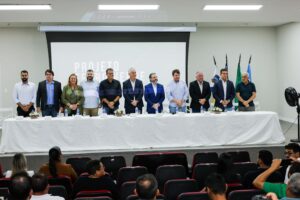
CBPM and Brazil Iron present Ferro Verde project to Bahian mayors and councilors
Bahia is advancing towards the transformation of the steel industry with the Green Iron Project, developed by the English company Brazil Iron under the consultancy of the Bahia Mineral Research Company (CBPM). On Tuesday (19), mayors and councilors of the municipalities involved participated in a meeting promoted by the state-owned company to learn about the details of the strategic venture, which combines technological innovation, sustainability and socioeconomic development.
+Piatã City Hall starts construction of water treatment plants
The event, held in the municipality of Piatã, was attended by the president of CBPM, Henrique Carballal, and the vice president of Institutional Relations of Brazil Iron, Emerson Souza, in addition to the local manager, Marcos Paulo; the mayor of Abaíra, Wellington Barbosa; and the mayor of Jussiape, José Luz. Also present were the deputy mayors and councilors of the municipalities; the special advisor to the Civil House, Marcelo Emerenciano; the former federal deputy and state president of Avante, Ronaldo Carletto; and state deputies Júnior Muniz, Niltinho, Fabíola Mansur and Eduardo Salles.
With a total investment of US$ 5.7 billion in the state of Bahia, the project involves the processing of iron ore, the construction of a 120 km railway branch and the installation of steel plants, which is expected to generate more than 55 thousand direct and indirect jobs. In addition, the company has already invested R$ 1.7 billion in Bahia, an amount that is not included in the estimated capital for the project.
In addition to the economic impact, the project positions Bahia as a national reference in the production of green steel, strengthens the sector's production chain and contributes decisively to the decarbonization of the Brazilian steel industry.
Considered an essential input for the transformation of the global steel industry, Green Iron consists of the production of Hot Briquetted Iron (HBI). The technology makes it possible to replace coal-fired furnaces, which are highly polluting, with electric furnaces, capable of reducing carbon dioxide emissions by up to 99%. The use of high-quality iron ore and 100% renewable energy places the project at the frontier of the sector's energy transition.
The president of CBPM highlighted the impact of the project for Bahia. "The Green Iron Project places our state at the forefront of the energy transition in the steel industry. It is not just an economic investment, but a strategic step to generate jobs, boost technology and transform a mineral resource into a cutting-edge, sustainable and efficient industrial solution," said Carballal.
For Brazil Iron's Vice President of Institutional Relations, the detailed presentation of the Green Iron Project to local managers reinforces the company's commitment to transparent relations.
"Our commitment to the development of the region is to create a legacy that goes beyond investment. We believe that a successful project is built with dialogue and partnership. In the next steps, we will do the same with community leaders and the population, ensuring that everyone's participation is the basis of our project," said Souza.
Who also commented on the relevance of the project was the mayor of Piatã, who considered the initiative a "very important step climb to associate the economic potential of the mineral sector with the responsibility of fostering social and environmental development".
"With this action, CBPM shows that it is possible to transform natural resources into a symbol of prosperity, always respecting the environment and the community, building a more sustainable future for Piatã", added Marcos Paulo.
Publication source: CBPM e Brazil Iron apresentam investimento de US$ 5,7 bilhões na Bahia
Read more
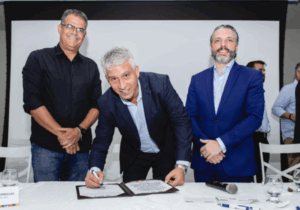
Photo: Michelle Miranda/Disclosure/CBPM
The Municipal Government of Piatã announced this Tuesday (19) the start of construction of the Water Treatment Plants (ETAs) in the communities of Bocaina de Cima, Bocaina de Baixo, and Mocó. The project, which aims to provide quality water to the municipality’s rural areas, is the result of a partnership with the Bahia Mineral Research Company (CBPM) and Brazil Iron.
The first plant to be completed will be Mocó’s, marking the beginning of a program that intends to bring treated water directly to the homes of these communities. The launch event was attended by the mayor of Piatã, Marcos Paulo, as well as the mayors of Abaíra and Jussiape, city councilors from the three municipalities, state deputies Júnior Muniz, Niltinho, Fabíola Mansur, and Eduardo Salles, the special advisor to the Ministry of the Civil House, Marcelo Emerenciano, and former federal deputy Ronaldo Carletto.
CBPM was responsible for enabling the project, while its execution will be carried out by the Municipal Government. Brazil Iron serves as an institutional partner, providing logistical support to facilitate implementation, without direct technical responsibility for the construction. This cooperation ensures that treated water reaches the communities safely and with quality.
For CBPM president Henrique Carballal, the initiative reinforces the company’s commitment to a sustainable and inclusive mining model. “If when we extract wealth from the soil and this wealth does not ensure that the citizen living on that land has dignity, housing, sanitation, education for their children, health, and the full construction of citizenship, then we are not fulfilling our role,” he emphasized.
“The construction of these plants is an example of how mining can and should serve the people, ensuring health, opportunities, quality of life, and social and economic development for the communities,” the politician added.
Mayor Marcos Paulo stressed that the project goes beyond infrastructure. “It is an investment by the Municipality of Piatã aimed at improving people’s quality of life, bringing greater dignity and attention to the health of Mocó families, who will now be able to count on this essential resource safely,” he said.
Brazil Iron’s Vice President of Institutional Relations, Emerson Souza, explained that the company’s role is to support and accelerate the implementation of the works, ensuring access to drinking water. “We believe that expanded access to water is fundamental for the development and health of all, and we are very pleased to see the positive impact this initiative will have on the lives of the residents,” he added.
At the same event, the Green Iron Project was presented, developed by Brazil Iron with consultancy from CBPM. The project strengthens the green steel production chain in Bahia and contributes to the decarbonization of Brazil’s steel industry. With a total investment of US$ 5.7 billion, it includes iron ore beneficiation, the construction of a 120 km railway branch, and the installation of steel plants, with the expectation of generating more than 55,000 direct and indirect jobs. To date, R$ 1.7 billion has already been invested in the project’s implementation, a value not included in the estimated capital.
Publication source: Prefeitura de Piatã inicia construção de estações de tratamento de água com apoio da CBPM e Brazil Iron
Read more

The steel industry, a pillar of modern civilization, faces the urgent challenge of reducing its emissions. Green iron – HBI – emerges as an essential solution for a low-carbon future and a healthier planet.
Steel and iron production, the backbone of global infrastructure and development, is also among the most carbon-intensive sectors. Each year, the sector accounts for approximately 24% of industrial greenhouse gas (GHG) emissions and about 8% of global CO₂e (carbon dioxide equivalent) emissions.
This scenario calls for a deep strategic reassessment, where decarbonization is not just an environmental goal, but an imperative necessity for the planet's sustainability. Without a transformation in the steel industry, global climate goals will be unattainable.
A Challenge of Steel Proportions
With the vast majority of these emissions—around 95%—coming from coal-fired blast furnaces, transitioning to a low-carbon future in steelmaking is intrinsically dependent on electrification. This implies massive adoption of electric arc furnaces (EAFs) powered by renewable electricity, enabling large-scale low-carbon steel production.
The feedstock for these EAFs is crucial: steel scrap and direct reduced iron (DRI), such as hot briquetted iron (HBI). When HBI is produced using renewable energy, it is classified as Green Iron.
Green Iron (HBI) holds transformative potential to drastically reduce the carbon footprint of the sector. Expert studies indicate that its use can lead to up to a 99% reduction in CO2 emissions compared to traditional coal-based blast furnace metallurgy. This represents a qualitative leap for industrial sustainability and addressing the climate crisis.
Allies on the Decarbonization Journey
In a strategic move to strengthen its green economy, Canada included high-purity iron ore—essential for green iron production—in its Critical Minerals List. This decision, driven by the demand for global steel industry decarbonization, positions Canada at the forefront of supplying sustainable materials.
Canada's measure not only aims to secure supply for itself and its allies, but also encourages investment and the development of cleaner value chains for these strategic minerals, reinforcing the country’s commitment to the global energy transition.
In Brazil, Vale and Brazil Iron emerge as strategic allies in the decarbonization of the steel industry, with the promise of producing high-quality green iron (HBI) for the steel supply chain.
Brazil Iron, for example, plans to produce green iron (HBI) and low-carbon iron, supplying essential feedstock for the transition from coal-based blast furnaces to electric arc furnaces.
Brazil Iron's goal, by producing green iron for use in EAFs, is to avoid around 17.5 million tons of CO₂e emissions per year compared to traditional coal-based blast furnace routes. Over the project's lifetime, it is estimated that approximately 473 million tons of CO₂e emissions will be avoided.
The goal of reaching net-zero emissions involves the development of a project that will use renewable energy, Carbon Capture and Storage (CCS) technology, and green hydrogen (H2).
A Legacy for the Planet
Market experience teaches us that transforming such a robust and essential industry does not happen without commitment and innovation. The role of green iron is therefore not only technical but also strategic for the future of our planet.
Reducing emissions by up to 99% in one of the largest industrial polluters is a monumental step toward a safer and more sustainable future. This alignment between industrial production and global climate goals is the best legacy we can leave for future generations.
About the author: Emerson Souza is the Vice President of Institutional Relations at Brazil Iron. He assumed this position after leading the company’s communications department for two years.
Read more

By Robert Davies (Updated Version - June 2025)
Europe’s steel industry stands at a precipice, facing a perfect storm of mounting decarbonisation pressures, fierce global competition in green subsidies, and weak domestic demand. Industry forecasts warn that without urgent action, 60,000 direct jobs, and millions more across supply chains could vanish by 2030.
The ramifications of an industry collapse would cascade across Europe’s industrial heartlands, deepening economic stagnation in regions already weakened by industrial downturns. To fulfil the European Green Deal’s Net Zero 2050 ambition, a substantial investment of approximately €400 billion would be required, directed principally towards scaling up renewable energy generation.
Steelmaking accounts for 25-30% of Europe’s industrial CO₂ emissions, a central target of the European Green Deal, alongside cement, chemicals, and energy-intensive manufacturing.
The EU Emissions Trading System (ETS) is no longer a remote threat and is now an expensive reality for steel producers. Previously protected by free allowances, the industry now grapples with the full impact of escalating carbon costs as these measures are rapidly phased out. Simultaneously, the Carbon Border Adjustment Mechanism (CBAM) is in its final transitional phase, with the first financial obligations set to begin in January 2026. The complexity of emissions data collection and the prospect of imminent costs are placing unprecedented pressure on industry. The Carbon Border Adjustment Mechanism (CBAM) is designed to shield low-carbon European steel producers from unfair competition and to prevent carbon leakage. However, because many raw-material supply chains are yet to switch to low-carbon sources, they will inevitably face additional costs.
Central to decarbonisation is a transition from coal-based blast furnaces to electric arc furnaces (EAFs), powered by renewable energy. When paired with high-quality scrap steel or low-carbon direct reduced iron (DRI), EAFs can produce steel with near-zero emissions, thus avoiding the escalating carbon costs.
EAFs rely on two primary inputs: high-quality scrap steel, which can reduce emissions by up to 70–80% compared to traditional methods, and direct reduced iron (DRI), which, when produced using green hydrogen, enables virtually carbon-free steelmaking.
Feedstock Bottlenecks
Europe’s supply of EAF-compatible scrap steel is falling short amid soaring global demand. According to the European Steel Association (Eurofer), Europe currently generates just 100 million tonnes of scrap annually, well below the 165–180 million tonnes required to meet the demand for EAF-driven steel production. With 337 million tonnes of new EAF capacity under development globally, competition for scrap is intensifying. The growing deficit underscores a hard reality: scrap alone cannot supply the volumes needed to decarbonise Europe’s steel industry.
Direct reduced iron (DRI) presents a vital pathway to lower emissions. Using natural gas as a reductant can reduce CO₂ emissions by around 50% per tonne of liquid steel. Achieving near-zero emissions, however, depends on replacing natural gas with green hydrogen. Unfortunately, Europe still lacks the renewable energy infrastructure to scale green hydrogen production to the required levels, a challenge that could take decades to overcome.
Brazil’s Ready-Made Solution
In Brazil, over 84% of the electricity generation capacity is from renewable sources, according to Brazil’s National Electric Energy Agency (ANEEL). In states like Bahia, renewables account for around 93 % of installed capacity and exceed 95 % of actual generation during the peak wind season (April to September). Coupled with its vast, high purity iron ore reserves that can produce direct reduction grade iron concentrates, Brazil is uniquely positioned to produce low carbon DRI at scale.
Companies like Brazil Iron Ltd, in Bahia state, are advancing DRI production facilities powered by renewables. The company plans to produce hot briquetted iron (HBI), a compact, transportable form of DRI. Innovations such as Midrex’s Flex MegaMod technology allow plants to initially operate on natural gas, significantly reducing emissions, while providing a seamless transition to green hydrogen as it becomes economically viable. This pragmatic approach allows European countries to maintain sovereign primary steel production near end markets while leveraging Brazil’s renewable energy capacity to reduce emissions in their supply chain.
The Geopolitical Landscape and the Green Trade War
The geopolitical dynamics have shifted from traditional tariff disputes to a full scale green trade war. The US Inflation Reduction Act has unleashed billions of dollars in clean energy subsidies, triggering a global subsidy race that inflates project costs and distorts competition. At the same time, China’s chronic steel overcapacity, now marketed as state backed green washed steel, threatens to flood international markets with so-called low-carbon steel products, often lacking transparent verification of emissions claims.
European steelmakers are squeezed between rising carbon levies under the EU Emissions Trading System and intense state support abroad. As free allowances are phased out and the EU’s Carbon Border Adjustment Mechanism nears its first settlements, the sector must navigate volatile price signals, shifting trade policies and fierce subsidy battles. Meanwhile, President Trump doubled Section 232 tariffs on steel and aluminium imports to 50 per cent, effective 4 June 2025. Without a coherent EU strategy to counter subsidy dumping and tariff threats, European producers risk ceding market share, undermining the bloc’s net zero ambitions and eroding strategic industrial autonomy.
Social Impact and the Future of Jobs
Steel production supports around 330,000 direct jobs in Europe and millions more across supply chains. Regions such as Germany’s Ruhr Valley, Spain’s Asturias, and France’s Lorraine face economic devastation should steelmaking collapse.
The UK’s steel sector, though outside the EU, faces parallel challenges, supporting around 39,000 direct Jobs and 180,000 in supply chains. The ongoing restructuring at Port Talbot, the UK's largest steelworks, exemplifies the challenges of transitioning to a low-carbon economy, which can be mitigated through strategic supply chain partnerships and demand for green steel from original equipment manufacturers (OEMs).
A Path Forward
Europe’s steel industry needs a bold and pragmatic strategy. The continent cannot afford to wait for domestic renewable and hydrogen infrastructure to catch up, action is needed now. Transitional feedstocks such as hot briquetted iron (HBI) offer an immediate way to cut emissions while laying the groundwork for a fully renewable future. The priorities should be:
The alternative, delays, inaction and isolationist trade policies, threatens livelihoods, economic stability and climate goals. Europe must act decisively, leveraging solutions already within reach to ensure its steel industry’s survival in a decarbonised future. And Brazil has the potential to be a great ally for the old continent in this mission.
General Reference List
Deutsche Bank. Available at: “EU carbon market: more to come”
Renewable Energy in Brazil
Source Aneel: https://www.irena.org
Data in the Article and Corresponding References:
337 million tonnes of EAF capacity under development globally
Read more
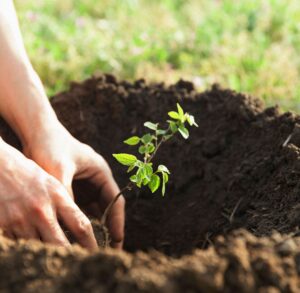
As part of the commemorative activities, the company promoted educational events in local public schools from June 3 to 5, addressing topics such as fauna, flora, water, and environmental preservation.
Piatã, June 6, 2025 – During Environment Week, celebrated from June 2 to 6 in honor of World Environment Day, Brazil Iron emphasized the central role that sustainability plays in its journey through initiatives carried out in the municipalities of Abaíra and Piatã. The mining company, which has implemented sustainable practices even before the start of its operations, reaffirms its commitment to environmental responsibility by embedding this value structurally—from planning to the projection of each future stage of its projects.
The organization reiterated its belief in the possibility of truly responsible mineral development, combining productive efficiency with strict environmental respect. This vision also includes valuing local communities, encouraging sustainable practices, and committing to building a more balanced and socially just future for the next generations.
As part of the commemorative actions, the company organized educational activities in local public schools. From June 3 to 5, students aged 6 to 15 from the cities of Abaíra and Piatã participated in sessions covering topics such as fauna, flora, water, and environmental preservation, always in a light, accessible, and interactive manner. Native seedlings were also donated, reinforcing community ties and the importance of early awareness.
Looking ahead, Brazil Iron aims to contribute to Bahia’s prominence in the production of green iron—an essential input for the decarbonization of the steel industry. The company’s strategy involves alignment with efficient and conscious mining practices already established in Brazil and internationally. By reaffirming its commitment to sustainable development, the company also extends an invitation to society: that today’s decisions generate positive impacts for future generations.
About Brazil Iron
Brazil Iron is a privately held company focused on developing iron ore projects, with the goal of building a world-class integrated operation—from mine to HBI—in the state of Bahia. Its Green Iron Project hosts one of the world’s largest undeveloped high-grade iron ore resources, with 1.7 billion tonnes compliant with the NI 43-101 standard.
With access to renewable energy, proximity to logistics infrastructure, and growing global demand for green steel, Brazil Iron is positioned to become a major supplier of low-carbon premium HBI to international markets.
For more information, visit: www.braziliron.com.br
Read more
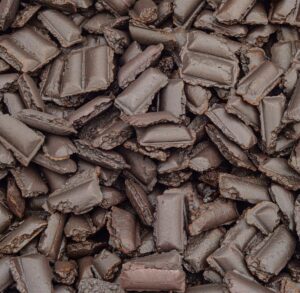
Brazil Iron is pleased to report a significant increase in its NI 43-101 compliant Mineral Resource Estimate for its flagship iron ore project, located across the Piatã, Abaíra, and Jussiape Municipalities in Bahia State, Brazil. The total Mineral Resource now stands at 1.7 billion tonnes, up from 1.37 billion tonnes, further reinforcing the company’s plans to develop a fully integrated 5 million tonnes per annum (Mtpa) Hot Briquetted Iron (HBI) operation.
“This latest Mineral Resource update marks a significant milestone for Brazil Iron. The scale and consistency of the deposit continue to impress, providing a solid foundation for one of the world’s most advanced and largest integrated green HBI projects. With 1.7 billion tonnes of iron ore that is suitable for beneficiation into a direct reduction quality pellet feed at 67.5% Fe, we’re well positioned to support over 20 years of premium, low-carbon HBI production and contribute meaningfully to the decarbonisation of the steel industry.”
— Toby Bodman, Head of Geology, Brazil Iron
Brazil Iron’s project is located within Brazil’s renewable energy corridor, designed to supply the rising demand from European steelmakers for low-carbon iron inputs. The company is uniquely positioned to deliver ESG-aligned, scalable metallics that meet the Oxford Institute for Energy Studies benchmark for bankable decarbonisation.
Independent analysis by the Royal School of Mines at Imperial College London confirms that Brazil Iron is the only green HBI project globally to meet all four Archetype Project criteria outlined by the Oxford Institute for Energy Studies, (i.e. full resource ownership, integrated infrastructure, renewable hydrogen, and world-scale capacity). This distinction enhances bankability and positions the project as a strategic model for industrial decarbonisation in emerging markets.
Less than 3% of the global seaborne iron ore supply meets direct reduction (DR) quality standards, yet demand is accelerating. A 109 Mtpa shortfall in DRI supply is forecast by 2031, driven by the 337 Mtpa of new Electric Arc Furnace (EAF) capacity currently under development. With its DR-grade resource and integrated HBI strategy, Brazil Iron offers a direct solution to the global shift toward low-emission steelmaking.
“I’m extremely pleased with the outstanding work delivered by our geological and technical teams. This resource update reflects both the scale of the opportunity and the disciplined execution behind our growth. Brazil Iron is making exceptional progress, and we remain fully committed to delivering a world-leading, low-carbon HBI platform that supports the steel industry’s transition. It’s a strong endorsement of our strategy and the team’s capability.”
— Guy Saxton, President, Brazil Iron
About Brazil Iron
Brazil Iron is a private iron ore developer focused on building a world-class integrated mine-to-HBI operation in Bahia State, Brazil. The Company’s flagship Projeto Ferro Verde hosts one of the world’s largest undeveloped high-grade iron ore resources with 1.7 billion tonnes NI 43-101 compliant.
With access to renewable power, proximity to logistics infrastructure, and growing global demand for green steel, Brazil Iron is positioned to become a leading supplier of premium, low-carbon HBI to international markets.
For more information, visit: www.braziliron.com.br
Read more
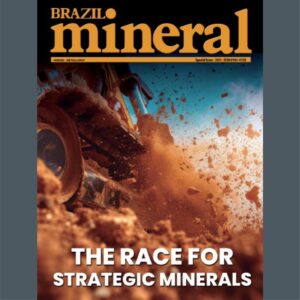
Brazil Iron is proud to be featured in the latest special edition of Mineral magazine, which highlights the critical role of strategic minerals in global markets. The publication underscores the importance of Brazil’s mineral sector, with a strong focus on iron ore as the country’s leading mineral by production value.
The article details Brazil Iron’s ambitious plans to develop an integrated iron ore and hot briquetted iron (HBI) project in Bahia. With a total investment budget of USD 5.7 billion, the project includes a mining unit, a pellet feed plant, and an HBI facility with an annual production capacity of 5 million tonnes. Additionally, a pellet feed plant is planned for the Piatã and Abaíra region, along with future green hydrogen production facilities.
Brazil Iron’s inclusion in Mineral magazine reinforces the company’s commitment to driving sustainable mining and steel decarbonization. By investing in value-added processing and renewable energy, Brazil Iron is contributing to the transformation of the global steel industry.
Read the full article in Mineral magazine’s 2025 special edition- [link to Magazine].
Read more
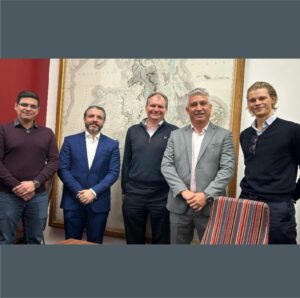
The Companhia Baiana de Pesquisa Mineral (CBPM), in collaboration with Brazil Iron, Universidade Senai Cimatec, and the renowned Imperial College London, has announced the launch of a Master’s program in Mining. This initiative aims to enhance the qualifications of professionals in the mining sector in Bahia, providing access to top-tier technical and scientific knowledge.
CBPM President Henrique Carballal highlighted the importance of the partnership: "In the next 30 to 40 days, the selection process will be completed, and twenty participants will be chosen for this Master's program, which aims to expand knowledge and foster the development of mining in the state of Bahia. This time, we are bringing in a wealth of scientific expertise from the Old World."
In addition to the Master’s program, a technical course is also in development, certified by Imperial College London, aimed at training workers interested in joining the mining sector. This initiative, also in partnership with Brazil Iron, seeks to meet the growing demand for skilled labor in the state’s expanding mining projects.
The collaboration with Imperial College London positions Bahia at the forefront of the international mining industry, aligning the state with the best practices and technologies available in the sector. CBPM and Brazil Iron reaffirm their commitment to sustainable development and innovation in Bahia’s mining industry.
The course so that it is free and open to candidates from Bahia, which is currently the third-largest mining market in Brazil. The goal is to enhance the local workforce and provide job opportunities for those who complete the course.
For more details, the full article is available here: CBPM anuncia realização de curso em parceria com universidade do Reino Unido Classe Politica • Política com Interatividade
Read more
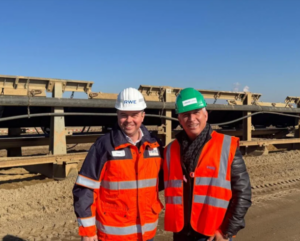
On February 17, Companhia Baiana de Pesquisa Mineral (CBPM) and Brazil Iron visited the headquarters of of the German energy company RWE to explore advanced solutions for sustainable mining and green iron production. RWE, a key partner of Brazil Iron, is providing engineering expertise to support the company’s transition to truckless mining systems powered entirely by renewable energy. The German company has successfully implemented this methodology in Europe’s largest open-pit mine, serving as a model for efficient and low-impact operations.
As part of their collaboration, Brazil Iron and RWE are also assessing the feasibility of producing green hydrogen as a reductant in the manufacturing of green iron. Brazil Iron aims to produce Hot Briquetted Iron (HBI), a stable form of Direct Reduced Iron (DRI), which plays a crucial role in the decarbonization of the steel industry. By enabling the shift from coal-fired blast furnaces to electric arc furnaces (EAFs), this initiative supports the global drive toward a low-carbon future.
The delegation included CBPM President Henrique Carballal, Brazil Iron's Vice President of Institutional Relations Emerson Souza, Special Projects Manager Chris Saxton, and RWE TI’s Head of Mining, Arie-Johann Heiertz.
Carballal emphasized the importance of this strategic partnership: "The collaboration between CBPM, Brazil Iron, and RWE represents a significant step forward for sustainable mining in Bahia. By aligning with cutting-edge environmental practices, we are not only reducing our footprint but also driving economic and social progress in the region."
He further highlighted Bahia’s potential as a global leader in sustainable iron production:
"Brazil Iron’s green iron project has the power to position Bahia at the forefront of the global transition to low-carbon steelmaking. This initiative directly supports the commitments of our governor, Jerônimo Rodrigues, in shaping a greener and more sustainable future for our state."
This visit underscores Brazil Iron’s commitment to pioneering innovative and environmentally responsible mining solutions, reinforcing Bahia’s role in the global green steel supply chain.
For more details, read the full article here: Ferro verde na Bahia: CBPM e Brazil Iron buscam inovação em visita à RWE na Alemanha
Read more

Brazil Iron participated in the II CBPM Mining & Sustainability Forum, where industry leaders, government officials, and experts gathered to discuss the role of mining in the global energy transition. The event, organized by the Companhia Baiana de Pesquisa Mineral (CBPM), underscored the importance of sustainable mining practices and Bahia’s unique position in supplying critical minerals and green iron to the global market.
Vice President of Institutional Relations, Emerson Souza, highlighted Bahia’s competitive advantage: “This region is uniquely positioned to lead in the transition to low-carbon iron production, not only because of its world-class mineral reserves but also due to its access to abundant renewable energy.”
The event reinforced strong institutional and government backing for responsible mining. CBPM President Henrique Carballal emphasized that sustainable mining must drive social and economic development: “We are committed to ensuring that mining benefits local communities, fosters economic growth, and aligns with global sustainability standards.”
Key discussions at the forum focused on workforce development, infrastructure, and policy support to maximize Bahia’s potential as a leader in the global green iron supply chain. The Bahia state government reaffirmed its commitment to supporting mining-linked industries, with initiatives aimed at workforce training and value-added processing to strengthen the region’s industrial base.
Brazil Iron remains dedicated to advancing sustainable mining practices and supporting Bahia’s economic growth. As the transition to green iron accelerates, the company is proud to contribute to the responsible development of Brazil’s mineral resources.
Read more
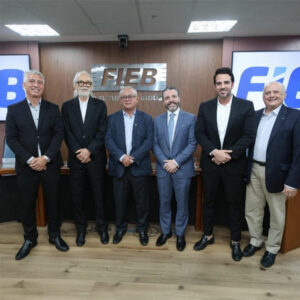
Brazil Iron presented its groundbreaking green iron project at an event hosted by the Federation of Industries of the State of Bahia (FIEB), where industry leaders, government representatives, and key stakeholders gathered to discuss its impact on sustainable iron production and regional development.
With an investment of $5 billion, the project is set to transform Bahia into a global hub for low-carbon iron production. It will create tens of thousands of jobs and contribute tens of billions in tax revenue, directly supporting local infrastructure, education, and economic growth in the region.
CBPM President Henrique Carballal highlighted the project's significance: “This is not just about iron production—it’s about economic transformation. This initiative positions Bahia as a global leader in green iron while driving industrial development and job creation.”
FIEB President Carlos Henrique Passos reinforced the importance of the initiative, stating: “This investment will attract sustainable industries and strengthen Bahia’s role in the international metals supply chain. The entire state stands to benefit from the opportunities it will generate.”
Brazil Iron’s Vice President of Institutional Relations, Emerson Souza, emphasized the strategic importance of the region: “The high-quality iron ore reserves in Bahia, combined with our investment in green technology, make this the ideal location for pioneering low-carbon iron production.”
The event reinforced strong institutional and industry support for Brazil Iron’s vision. As the project moves forward, collaboration between government, industry, and local communities will be key to unlocking its full potential for economic and sustainable development.
Read more
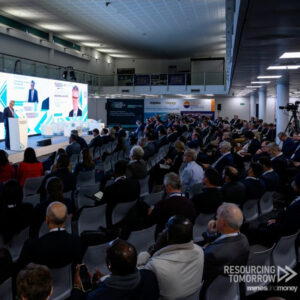
At the recent Resourcing Tomorrow Conference held in London from December 3-5, 2024, Brazil Iron showcased its innovative project, which will produce Hot Briquetted Iron (HBI) using the country's extensive renewable energy. This initiative aligns with the global steel industry's imperative to transition from traditional coal-powered blast furnaces to more sustainable Electric Arc Furnaces (EAFs).
The steel industry is a significant contributor to global CO₂ emissions, accounting for 25-30% of all global industrial CO₂ emissions. Traditional blast furnace methods rely heavily on coal, resulting in substantial carbon footprints. In contrast, EAFs, especially when powered by renewable energy and utilizing scrap steel or direct reduced iron (DRI), offer a more environmentally friendly alternative. Brazil Iron will produce HBI, which is a briquetted form of DRI that can be transported safely to customers.
The shift towards EAFs is gaining momentum globally, with 337 million tonnes per annum (mtpa) of EAF capacity under development. However, this transition presents challenges, notably a projected deficit of 109 mtpa of DRI, as highlighted by McKinsey & Company. This shortfall is particularly concerning for regions lacking sufficient renewable energy capacity to produce low-carbon DRI.
Brazil Iron's operations in Bahia are uniquely positioned to address this challenge. With access to an almost 100% renewable electricity grid and world-class iron ore resources suitable for direct reduction, the company is set to become a key player in supplying low-carbon HBI to the global market.
During the conference, Brazil Iron presented its project to strategic partners, emphasising the importance of collaborative efforts in overcoming the looming DRI deficit and advancing the steel industry's decarbonisation goals to meet global climate targets.
Read more
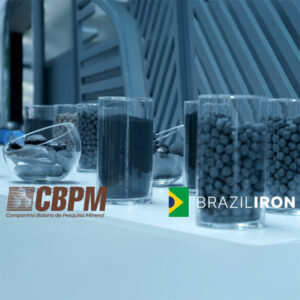
Brazil Iron has formalized a strategic partnership with the Companhia Baiana de Pesquisa Mineral (CBPM), strengthening its commitment to responsible mining and regional development in Bahia. This collaboration will support the advancement of Brazil Iron’s $5 billion green iron project in Piatã, ensuring that the initiative aligns with the interests of local communities and the state.
CBPM, a state-owned entity with over five decades of geological expertise, will act as a consultant for Brazil Iron, facilitating regulatory processes, supporting community engagement, and ensuring that the project contributes meaningfully to Bahia’s sustainable economic growth. CBPM President Henrique Carballal emphasized the institution’s evolving role: “We are embracing a new philosophy, moving beyond mineral research to actively support the development of mining projects that align with Bahia’s economic and environmental goals.”
The project is expected to generate tens of thousands of direct and indirect jobs and contribute tens of billions in tax revenue, fostering infrastructure, education, and local industry. Emerson Souza, Brazil Iron’s Vice President of Institutional Relations, highlighted the importance of the partnership: “CBPM has provided invaluable insight, helping us refine our approach to ensure that our project delivers not only economic value but also social and environmental benefits.”
This collaboration underscores Brazil Iron’s dedication to responsible mining and sustainable industrial development in Bahia. The company remains committed to working alongside local and state institutions to drive economic progress while upholding the highest standards of environmental and social responsibility.
For more details, the full article is available here: CBPM e Brazil Iron fecham parceria para viabilizar projeto de US$5 bilhões
Read more
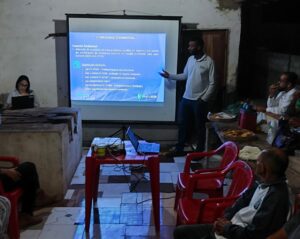
The Falhado community hosted the 13th meeting of the Mocó Mine Development Monitoring Commission last week. The meeting took place at the Association of Horsemen in that locality, located in the rural area of Piatã.
The Environmental Impact Study and Environmental Impact Report (EIS/EIR) remained the main topic of discussion, and participants were able to gain a better understanding of the important aspects of this environmental protection mechanism. CAE members were able to inquire about the actions that the company has undertaken and will implement regarding this issue. It was also announced that maintenance work will be carried out on the Tabua road, aiming to improve the route.
The next meeting is scheduled for June 14th at the premises of the Community Association of Small and Mini Rural Producers in Bocaina and Tabua.
Read more

News! Another way to connect with us! 👥✉️ Brazil Iron has created the Virtual Question and Suggestion Box as a way to listen and address the concerns of those living in the region!
Now, you can send your questions, doubts, and suggestions quickly and conveniently through our social media channels.
How to send your messages:
The channels are always open, and the space for questions in our Stories will be available every Tuesday. Send your question or suggestion and share this post so that more people can access these channels.
Read more
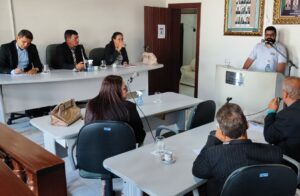
The City Council of Jussiape received a team from Brazil Iron on Friday, the 19th, for a presentation on the activities carried out in the city. The work is in the research phase and includes the regions of Bicho, Contendas, Palmeiras, Lagoinhas, and Bananeira.
Representatives of the local population were able to gather more information, have their questions answered regarding the company's operations, and learn about all the environmental concerns and actions that are being and will be implemented by the mining company.
Just as we did in person, the company is extremely grateful for the opportunity to showcase its work and establish this partnership with the local public entities. We would like to reiterate that we will always be available whenever there is a need.
Read more
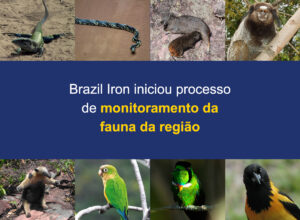
Brazil Iron recently initiated a fauna survey process in the region. This work, the largest and most comprehensive ever conducted in the area, will encompass the municipalities of Piatã, Abaíra, Jussiape, and Mucugê.
Several cameras that can capture images in extremely low light conditions have been installed in various locations. The equipment features technology that starts recording when movement occurs in the capture area.
This initiative will provide our environmental team with the necessary information to implement measures for protecting and caring for all the species inhabiting the region.
Read more
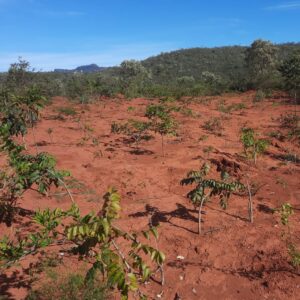
The Brazil Iron Plan for the Recovery of Degraded Areas (PRAD) has surpassed the milestone of two thousand planted seedlings since its implementation. Nearly R$100,000 has been invested in restoring regions that currently lack vegetation and maintaining the preservation of natural resources.
With the acquisition of inputs and substrates to assist in the production of native seedlings from the company's nursery and reforestation efforts, the mining company has been carrying out plantations near the Mocó Mine. All species involved in this reforestation process are carefully selected to achieve ecological succession, conservation, and genetic biodiversity in the area.
Read more

For those who didn't follow our post last week, we are starting a series called Vida sem Minação. The objective is to make people, in general, aware that mining activity is present in several areas of our lives. Some of them we didn't even imagine.
In this first text, let's understand that, without the mining activity, you wouldn't even be reading this information. Let's see:
Iron (Fe) – the most common and most used metal in the manufacture of smartphones (about 20% of the components have iron in their manufacture). It is present in the speakers, microphones and stainless steel housings. Aluminum (x) – in addition to being an option to steel, it is used to manufacture screen glass.Copper (Cu) – is used abundantly in electrical circuits.
These are just examples of the three most used metals in manufacturing a cell phone, as there are many others. As we said at the beginning, if there were no mining, you would not be able to consult social networks, send messages to friends or call relatives who live far away.Read more
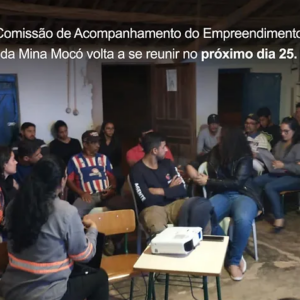
The Monitoring Commission for the Mocó Mine Project will have its first meeting of the year in January. The conference will take place on the 25th Wednesday, at the building of the Community Association of Small and Mini Rural Producers of Bocaina and Tabua (ACPMPRBT). Some subjects are scheduled on the agenda, such as the presentation of Brazil Iron's new Environment manager and the updated air quality monitoring results. The Bebedouro spring recovery project and water quality results with photographic records will also be shown. You can find all the information on CAE meetings on all of Brazil Iron's communication channels.
Read more
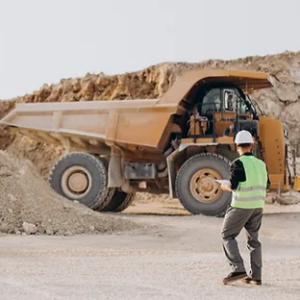
You must have already read, heard or witnessed several demonstrations trying to end mining activity. Unfortunately, these groups often convince the press, politicians and ordinary citizens. Nobody explains what would happen to our lives if there were no more iron ore extraction and other raw materials. In the coming weeks, we will bring examples of everyday situations that would permanently change if these activists were successful in their endeavours. Follow the series "Life Without Mining" on Brazil Iron's channels.
Read more
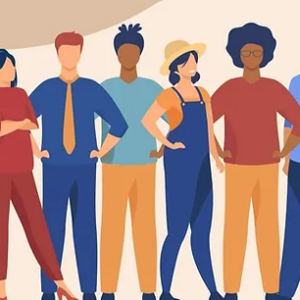
A preview of the 2022 IBGE census released recently points out that the population of Piatã has surpassed the mark of 20 thousand inhabitants. Compared to the 2021 figures, the growth represents around 20%. According to the Institute, the municipality has 20,098 people, against 16,864 registered in the previous year. The advance is one of the largest among Bahian cities. According to figures revealed by the city hall, almost half of this amount comes from the rural area.
Read more
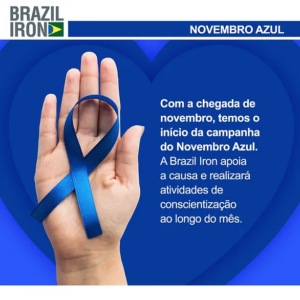
With the arrival of November, we have the beginning of the Blue November campaign. Brazil Iron supports the cause and will carry out awareness activities throughout the month. The beginning of the activities took place with the employees of the maintenance sector, with clarifications on the subject. In 2011, the Institute launched Blue November in the country, inspired by the Australian Movember movement (Moustache/November, in free translation Mustache/November) and the international campaign Pink October for breast cancer. Even with the constant campaigns of prevention and alert for the accomplishment of tests that can detect prostate cancer at an early stage, many men with advanced age are still reluctant to follow the screening recommendations. Prostate cancer is the most common type among Brazilian men, second only to non-melanoma skin cancer. For the year 2022, Blue November brings back the motto #azultitude, intending to raise awareness among Brazilian men to have an attitude and be protagonists of their health and take care of it in an integral way. Win this fight before it starts. Early diagnosis saves lives. Be the hero of your health.
Read more
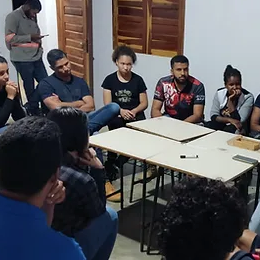
On October 26, a Participatory Workshop was held with the residents of locations around the Mocó Minerário Complex. The objective was to raise the population's real needs and expectations concerning the enterprise and identify the potentialities of these communities. The data collected aims to support the "Program to Support the Development of Rural Productive Activities (PADA)" proposal, which will stimulate sustainable regional social and economic development. The meeting took place on the premises of the school building of the Rio das Conta Community, rural area of Piatã/BA. The members and alternate members of the Undertaking Monitoring Commission (CAE) of Mina Mocó and residents of the AID locations were present, invited by the members of the CAE. In all, the workshop had 28 participants.
Read more
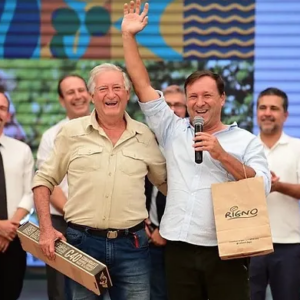
Speciality coffee produced by Antonio Rigno de Oliveira Filho at Fazenda Tijuco, champion of the Cup of Excellence 2022, the world's leading quality contest for the product. The 2002 vintage gave the family their fourth title in the competition, following 2009, 2014 and 2015 achievements. With a score of 91.41 points, out of a possible 100, the famous Chapada Diamantina brand won the event held by the Brazilian Association of Specialty Coffees (BSCA) in partnership with the Brazilian Trade and Investment Promotion Agency (ApexBrasil) and Alliance for Coffee Excellence (ACE). Among the top 10, six are from Piatã. The property Sítio Bonilha was in 2nd., Fazenda Gerais in 6th., Fazenda Divino Espírito Santo in 7th., Sítio São Sebastião in 9th. And Sítio Entre Vales in 10th.
Read more
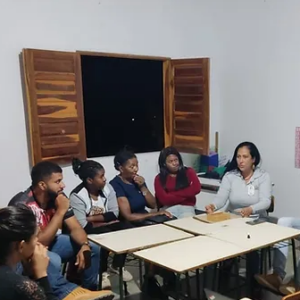
It took place last Wednesday, the 26th, and the 6th. meeting of the Mina Mocó Project Monitoring Commission. The meeting took place in the school building of the Rio das Contas Community and was attended by nominated members and representatives of the localities. On occasion, the results of the Air Quality Monitoring were presented to the assembly, and the scheduling of a guided tour of Brazil Iron's operation was discussed. There was also the collection of data that will subsidize the elaboration of the "Program to Support the Development of Rural Productive Activities", which we will talk about in more detail shortly. In November, instead of being held in one locality, the meeting will take the form of a visit by the titular and alternate members to Mina Mocó. Dates will be confirmed soon.
Read more
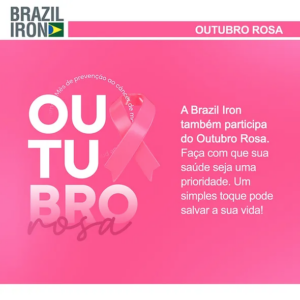
Breast cancer occurs from an uncontrollable multiplication of abnormal cells resulting from genetic alterations, which can be hereditary or acquired. There are several types of breast cancer. Some evolve quickly, but most develop favourably when diagnosed and treated promptly. Created in the early 1990s in the United States, the Pink October movement emerged to raise awareness among the population of the importance of early diagnosis, control of breast cancer and protective measures against the disease, which is the type of cancer most common among women in the world and Brazil, after non-melanoma skin cancer. Brazil Iron supports this movement and carries out a series of activities throughout the month to raise awareness among employees and their families. Make your health a priority. A simple tap can save your life!
Read more

Brazil Iron has several channels to communicate with you. We recently launched our new Instagram profile, all to keep you informed of all our activities. By Whatsapp, you can ask your questions and clear your doubts. Message (77) 98114-8222. On Facebook, you can access Brazil Iron Mineração LTDA or by our website www.braziliron.com.br Follow, like and share our channels.
Read more
Our world-class iron ore deposits (itabirite) will be beneficiated using magnetic separation and flotation at the mine site. The process will produce a 67.5% Fe concentrate using 100% renewable electricity. Currently only 3% of the seaborne iron ore market reaches this high specification direct reduction quality.
The production of direct reduction green pellets and HBI will occur in the port complex using renewable electricity, green hydrogen and bio-methane.
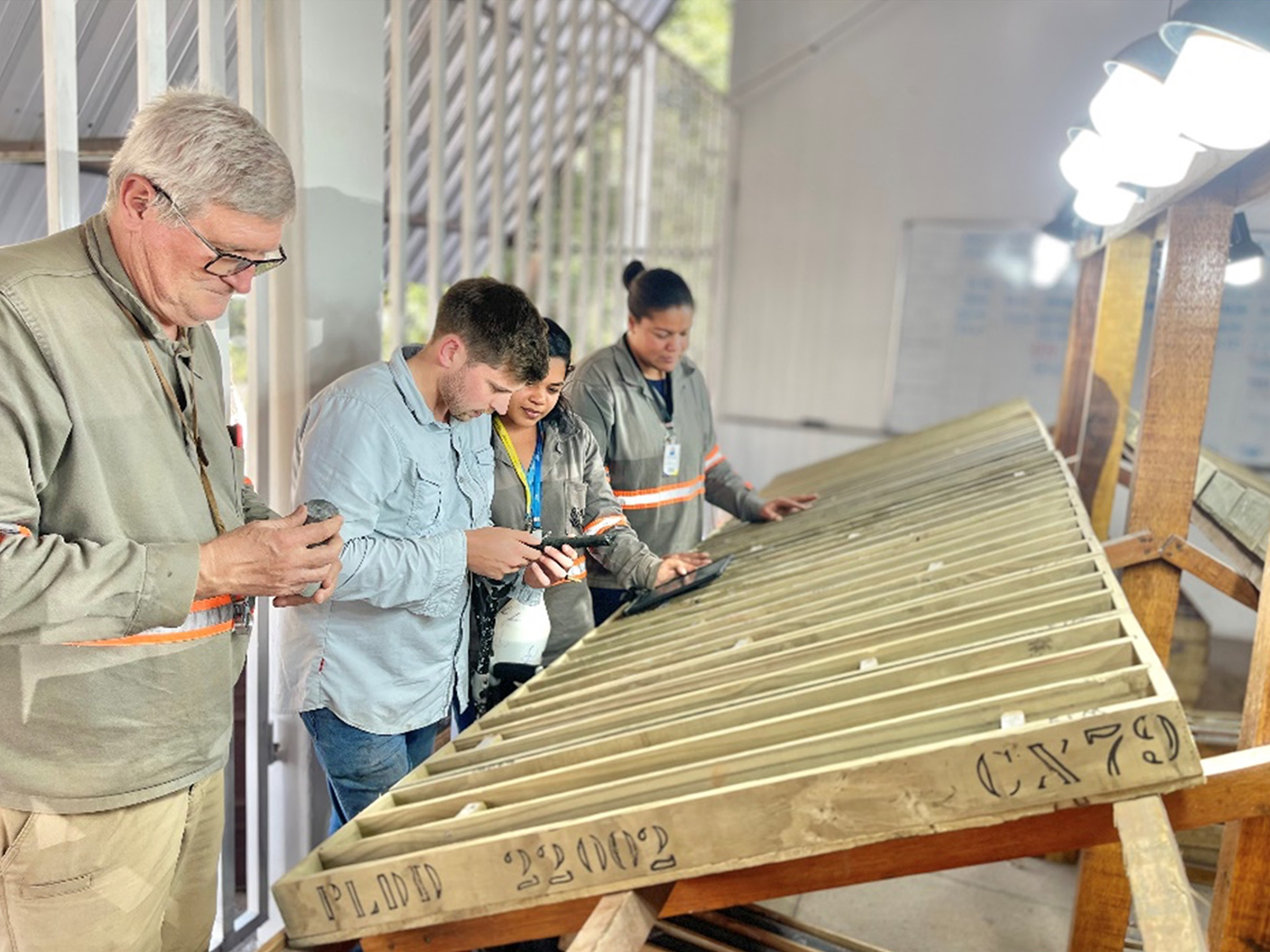
Brazil Iron intend to become the first integrated producer of green pellet feed, pellets and HBI, with net-zero carbon emissions.
Building the world’s first net-zero carbon emission integrated green pellet feed, pellet and HBI operation. 100% renewable energy, green hydrogen and direct reduction iron ore.
Our goal is to become global leaders in decarbonising the iron and steel industry. We are uniquely positioned to develop a new VRO C02 operation, with all processes and logistics running on…
